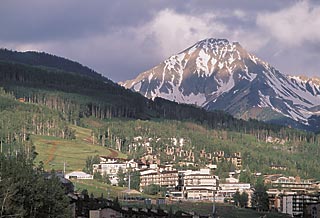2010 Summer Workshop
GEM will be holding its annual summer workshop June 21-26, 2009 at the Snowmass Conference Center in Snowmass, Colorado. Registration can be made at the GEM Workshop Web Site by June 14, 2009. The GEM Workshop Web Site also provides the workshop agenda.
The following GEM sessions are calling for presentations. Poster titles must be submitted to the workshop website no later than Friday, June 12.
(Calls for presentations are being added to this page.)
Contents
- 1 GGCM Metrics and Validation
- 2 GGCM Modules and Methods
- 3 Bow Shock Phenomena and their Magnetospheric Impacts
- 4 Plasma Entry and Tranport into and within the Magnetotail (PET)
- 5 Dayside Magnetopause Reconnection
- 6 Physical Processes in the Cusps: Plasma Transport and Energization
- 7 Magnetosphere-Ionosphere Coupling, Electrodynamics and Transport (MICET)
- 8 Near Earth Magnetosphere: Plasma, Fields and Coupling
- 9 Space Radiation Climatology
- 10 Diffuse Auroral Precipitation
- 11 Plasmasphere-Magnetosphere Interactions
- 12 Substorm Expansion Onset: The First 10 Minutes
- 13 Modes of Solar Wind-Magnetosphere Energy Transfer
GGCM Metrics and Validation
GGCM Modules and Methods
Conveners: John Dorelli <john.dorelli at nasa.gov>
The GGCM Methods and Modules Focus group would like to invite participants to two sessions to be held at the summer GEM workshop in Snowmass June 21-26. Both sessions will be held Wednesday, June 24:
Session 1 (10:30 am): What role does electron dissipation play in open boundary condition simulations of magnetic reconnection?
In this session, we would like to continue where we left off last year, addressing the following issues:
1. What is the role of secondary magnetic islands? Are they an irrelevant by-product, or do they play an essential role in determining the aspect ratio of the dissipation region?
2. What limits the aspect ratio of the electron dissipation region?
3. How does the reconnection rate scale with dissipation scale parameters (e.g., resistivity or electron mass) in simulations (electron MHD, Hall MHD, hybrid, fully kinetic)?
Session 2 (1:30 pm): How do we accurately model magnetospheric reconnection on a global scale?
Topics for this session include:
1. How does the physics of reconnection depend on the ad hoc resistivity model used in global MHD codes? In particular, how does reconnection scale with resistivity in the high Lundquist number limit? What is the effect of numerical resistivity? Can we reproduce Petschek reconnection by localizing the plasma resistivity? What is the effect of current dependent resistivity?
2. How does dayside magnetopause reconnection work in global MHD codes? Is reconnection locally controlled or externally driven? Does the Cassak- Shay formula apply to the dayside magnetopause?
3. What is the status of global Hall MHD modeling? What are the most robust numerical approaches? What are the new results coming from the latest generation of global Hall MHD magnetosphere codes?
4. What is the status of other non-MHD approaches to global magnetosphere modeling (e.g., global hybrid codes)? Are there any new ideas on the horizon?
If you are interested in participating in either of these sessions, please email one of the focus group co-chairs:
john.dorelli at nasa.gov or brian.sullivan at unh.edu.
Bow Shock Phenomena and their Magnetospheric Impacts
Conveners: N. Omidi <omidi [at] solanasci.com>, D. Sibeck <david.g.sibeck [at] nasa.gov>
During the 2009 GEM Summer workshop at Snowmass Colorado, a session on the bow shock and its magnetospheric impacts will be held on Monday June 22nd. This marks the last year of the Bow Shock Focus Group and in addition to discussion of recent observations, modeling, and theory of the bow shock and related processes in the foreshock and the magnetosheath we will discuss future plans. In particular, N. Omidi will provide a summary of accomplishments and current status and D. Sibeck will discuss future missions followed by solicitation and discussion of ideas about future directions and plans.
Those who are interested and wish to show a few relevant slides are invited to contact the conveners:
omidi[at]solanasci.com, David.G.Sibeck[at]nasa.gov.
For updated information please see http://www.cpe.vt.edu/gem/index.html .
Plasma Entry and Tranport into and within the Magnetotail (PET)
Dayside Magnetopause Reconnection
Physical Processes in the Cusps: Plasma Transport and Energization
Magnetosphere-Ionosphere Coupling, Electrodynamics and Transport (MICET)
Near Earth Magnetosphere: Plasma, Fields and Coupling
Space Radiation Climatology
Diffuse Auroral Precipitation
Plasmasphere-Magnetosphere Interactions
Substorm Expansion Onset: The First 10 Minutes
This is the 1st announcement of the focus group "Expansion Onset: The First 10 Minutes" for the upcoming GEM workshop in Snowmass (June 21-26, 2009; http://www.cpe.vt.edu/gem/index.html).
We will have 4 breakout sessions on June 25 (Thu) and 26(Fri) (for the current schedule of the overall workshop see http://www.ece.vt.edu/GEM-2009).
Following are four topics and primary questions we will discuss this year.
1) Onset Timing What is the time sequence of onset-related phenomena observed in space and on the ground, and what are the implications for substorm initiation?
2) M-I Coupling How does aurora evolve around substorm onsets? How are magnetospheric and ionospheric onset signatures connected in terms of auroral precipitation and currents, and what can we learn about substorm initiation from simultaneous ground-satellite observations?
3) Onset Signature Propagation How do onset-related signatures propagate in the magnetosphere? How does the uncertainty of propagation time affect our understanding of substorm initiation?
4) Mapping How does the presence and evolution of pre-onset and expansion-phase current systems affect the link between auroral and plasma sheet locations and processes?
Sessions will be scheduled based on responses to this announcement. Those who are interested in participating in the discussion are encouraged to email to Andrei Runov (arunov at igpp.ucla.edu), the session coordinator, with c.c. to other conveners.
We look forward to seeing you there.
Vassilis Angelopoulos (vassilis at ucla.edu)
Kazuo Shiokawa (Shiokawa at stelab.nagoya-u.ac.jp)
Andrei Runov (arunov at igpp.ucla.edu)
Shin Ohtani (ohtani at jhuapl.edu)
